People who played key roles in the steps leading to the Civil War
Seeing the Big Picture
All documents and text associated with this activity are printed below, followed by a worksheet for student responses.Name:
Class:
Class:
Worksheet
People who played key roles in the steps leading to the Civil War
Seeing the Big Picture
Examine the documents and text included in this activity. Consider how each document or piece of text relates to each other and create matched pairs. Write the text or document number next to its match below. Write your conclusion response in the space provided.1
2
3
4
5
6
7
8
9
1
Activity Element

2
Activity Element
Woman who wrote Uncle Tom's Cabin, a novel that revealed the injustice of slavery.
3
Activity Element

4
Activity Element
Protest against laws that angred abolitionist--forcing them to accept slavery.
5
Activity Element

6
Activity Element
Abolitionst editor who criticized slavery in his newspaper, "The Liberator."
7
Activity Element
Former slave, great public speaker, and outspoken critic of slavery. Editor for newspaper, "The North Star."
8
Activity Element

9
Activity Element

10
Activity Element

11
Activity Element
The Great Emancipator
12
Activity Element
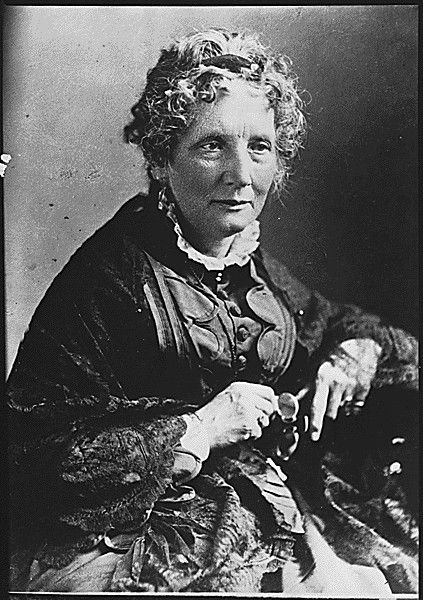
13
Activity Element

14
Activity Element
Supreme Court case that angered abolitonists.
15
Activity Element
Letter by women who fought for women's rights.
16
Activity Element
An abolitionist with extremest view who wanted to start a slave rebellion.
17
Activity Element
Amendment that gave women the right to vote
18
Activity Element

Culminating Document
Photograph of President Abraham Lincoln
ca. 1860-1865
Shortly after being elected the 16th President of the United States, Abraham Lincoln faced a divided nation. The Civil War lasted almost his entire Presidency. Just weeks into his second term as President, Lincoln was assassinated while watching a play at Ford’s Theater in Washington, D.C.
This primary source comes from the Records of the Office of the Chief Signal Officer.
National Archives Identifier: 530413
Full Citation: Photograph of President Abraham Lincoln; ca. 1860-1865 ; Mathew Brady Photographs of Civil War-Era Personalities and Scenes, 1921 - 1940; Records of the Office of the Chief Signal Officer, . [Online Version, https://docsteach.org/documents/document/photograph-of-president-abraham-lincoln, May 4, 2024]Photograph of President Abraham Lincoln
Page 1
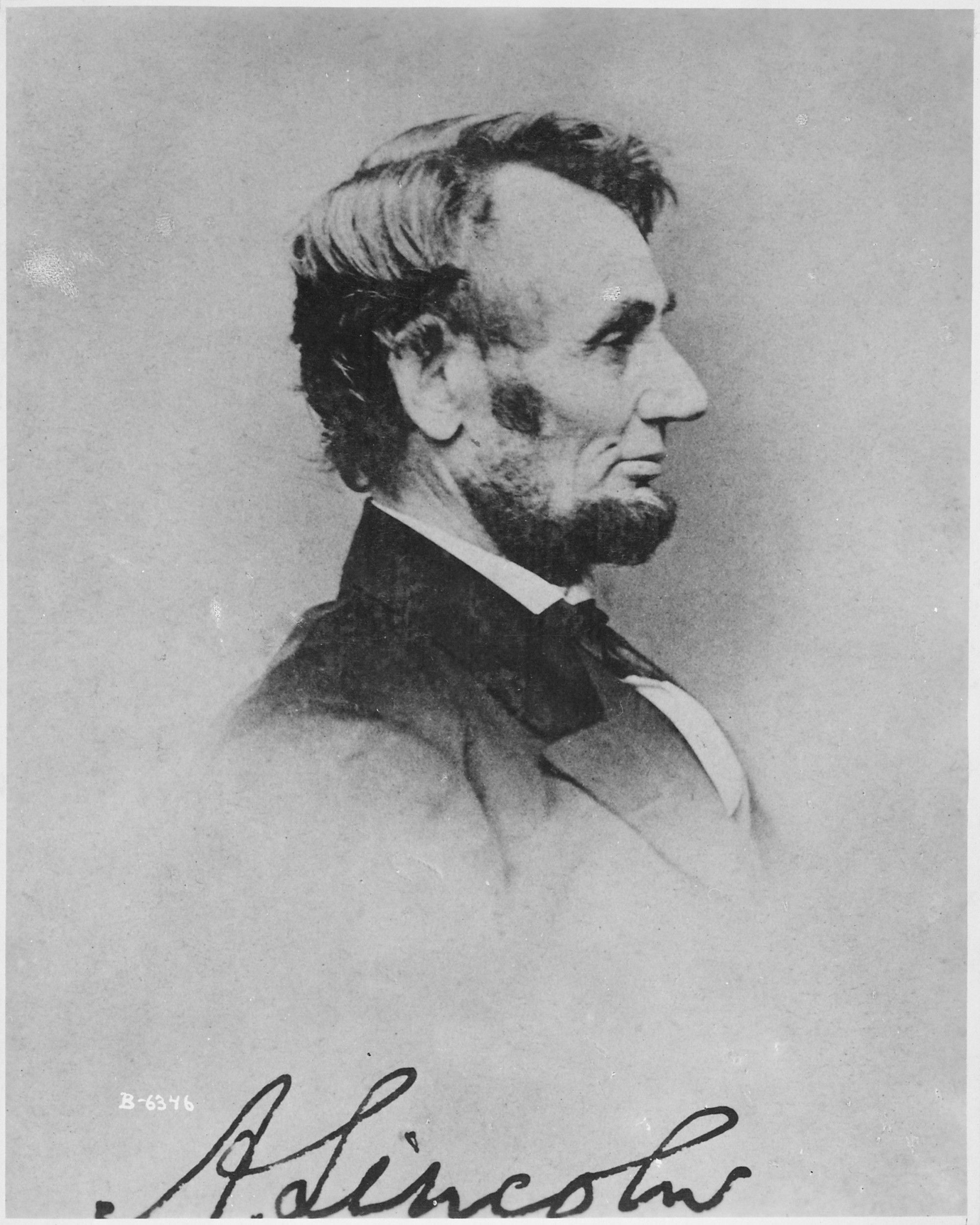
Conclusion
People who played key roles in the steps leading to the Civil War
Seeing the Big Picture
Your Response
Document
Abolitionist John Brown
ca. 1850
Abolitionist John Brown was born on May 9, 1800, in Torrington, Connecticut, to a deeply religious Congregationalist and overtly antislavery family. At age five, his family moved west to Hudson, Ohio, where his father, Owen Brown, owned a successful tannery and supported the founding of Oberlin College, a racially inclusive co-ed high learning institution with an antislavery curriculum.
In 1825 Brown moved to western Pennsylvania. He opened his own tannery and started the Franklin Land Company with 700 acres for suburban development. The tannery was a major stop on the underground railroad. However, the panic of 1837, a financial crisis that caused plunging profits, prices, and wages and increasing unemployment, bankrupted Brown.
After the crisis, Brown emerged as an unyielding abolitionist. In 1851 he helped found the League of Gileadites, an organization of whites, free blacks, and runaway slaves dedicated to protecting fugitive slaves from slave catchers. By the end of 1856, Brown was one of the most renowned figures in “bleeding Kansas,” the violent confrontations over the legality of slavery in the Kansas territory.
On Sunday, October 16, 1859, Brown and his men began their raid on Harpers Ferry. Brown considered Harpers Ferry an ideal location to attack because it was close to a relatively high population of slaves; its proximity to the Blue Ridge mountain range offered an escape route; and the Federal armory and arsenal contained weapons Brown could use to defend himself.
After completing their mission, instead of running for the hills, Brown and his men remained in the armory in Harpers Ferry awaiting the army of slaves that Brown thought would rise up to join them. They never came. Brown was in custody before midday on October 18. Brown’s trial and sentence were carried out swiftly, and on December 2, 1859, he was hanged for treason, murder, and conspiring with slaves to rebel.
In 1825 Brown moved to western Pennsylvania. He opened his own tannery and started the Franklin Land Company with 700 acres for suburban development. The tannery was a major stop on the underground railroad. However, the panic of 1837, a financial crisis that caused plunging profits, prices, and wages and increasing unemployment, bankrupted Brown.
After the crisis, Brown emerged as an unyielding abolitionist. In 1851 he helped found the League of Gileadites, an organization of whites, free blacks, and runaway slaves dedicated to protecting fugitive slaves from slave catchers. By the end of 1856, Brown was one of the most renowned figures in “bleeding Kansas,” the violent confrontations over the legality of slavery in the Kansas territory.
On Sunday, October 16, 1859, Brown and his men began their raid on Harpers Ferry. Brown considered Harpers Ferry an ideal location to attack because it was close to a relatively high population of slaves; its proximity to the Blue Ridge mountain range offered an escape route; and the Federal armory and arsenal contained weapons Brown could use to defend himself.
After completing their mission, instead of running for the hills, Brown and his men remained in the armory in Harpers Ferry awaiting the army of slaves that Brown thought would rise up to join them. They never came. Brown was in custody before midday on October 18. Brown’s trial and sentence were carried out swiftly, and on December 2, 1859, he was hanged for treason, murder, and conspiring with slaves to rebel.
This primary source comes from the Records of the U.S. Marine Corps.
National Archives Identifier: 532587
Full Citation: Abolitionist John Brown ; ca. 1850; Records of the U.S. Marine Corps, . [Online Version, https://docsteach.org/documents/document/abolitionist-john-brown, May 4, 2024]Abolitionist John Brown
Page 1
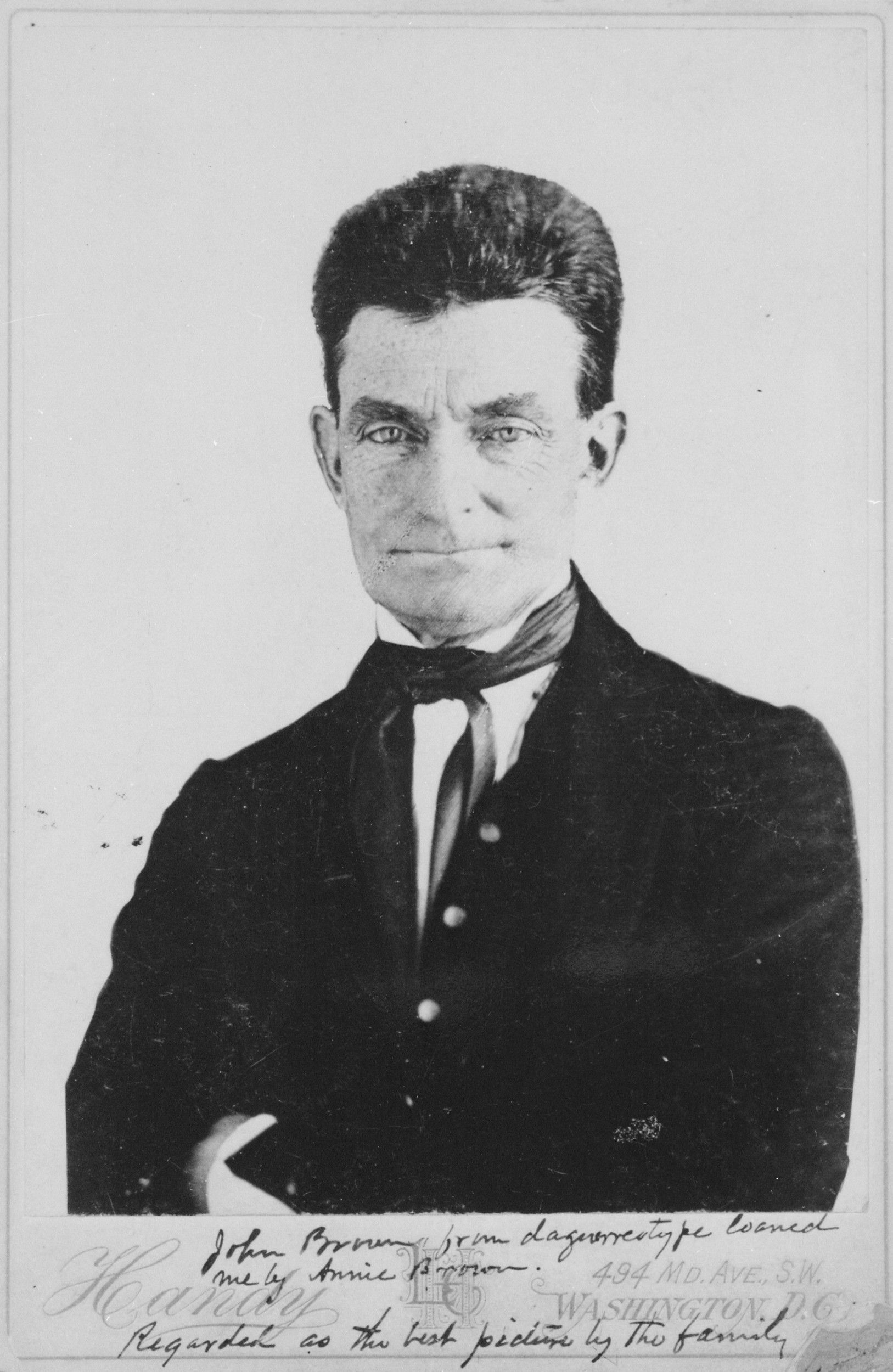
Document
Harriet Beecher Stowe, circa 1870s-80s
ca. 1870s - 1880s
Harriet Beecher Stowe, seen in this image from the 1870s-80s, was an abolitionist, author, and figure in the woman suffrage movement. She wrote more than 20 books and was influential both for her writing and her public stance on social issues of the day.
Her most known work, Uncle Tom’s Cabin (1852), was a depiction of life for enslaved people in the mid-19th century. It energized antislavery forces in the North and provoked widespread anger in the South.
After Congress passed the Fugitive Slave Act in 1850, which punished anyone who offered food or temporary shelter to enslaved people who ran away, and following the loss of her 18-month-old son, Samuel, Stowe was inspired to write about slavery. She used the personal accounts of formerly enslaved people to write her antislavery novel, Uncle Tom’s Cabin: or, Life Among the Lowly. When it first appeared in installments in the abolitionist newspaper The National Era between June 5, 1851 and April 1, 1852, it met with hostility by slavery proponents.
Stowe expected that she would write the story in three or four installments, but she eventually wrote more than 40. The novel Uncle Tom’s Cabin was then published as a two-volume book in 1852. It was a best seller in the United States, Britain, and Europe and was translated into over 60 languages.
The book received both high praise and harsh criticism and propelled Stowe and the issue of slavery into the international spotlight. Slavery proponents argued that the novel was nothing more than abolitionist propaganda. In the South, and in the North too, people protested that the depiction of slavery had been melodramatically twisted. Southerners particularly promoted the idea that the institution of slavery was benevolent and benign. Responding to charges that the book was a distortion, Stowe published another book, A Key to Uncle Tom’s Cabin, which documented the actual cases upon which her book was based to refute critics’ claims that her work was fabricated and based on supposition.
Later, Stowe embraced woman suffrage and briefly considered an alliance with Susan B. Anthony and Elizabeth Cady Stanton, who tried in 1869 to recruit her to write for their newspaper, The Revolution. Stowe declined the partnership, but eventually developed a deeper empathy for the women’s rights movement and the activities of the suffragists. She wrote a series for the Atlantic, and in one installment, she wrote, “The question of Woman and her Sphere is now, perhaps, the greatest of the age....If the principles on which we founded our government are true, that taxation must not exist without representation, and if women hold property and are taxed, it follows that women should be represented in the State by their votes, or there is an illogical working of our government.”
Throughout her life, Stowe used literature to shape public opinion and leaned on her own experiences as a woman and a mother. She was keenly aware of racial differences and regional customs, and it translated into her distinct influence on the American experience. Writing at a time when women were denied the vote and had no representation in Congress, Stowe used literature as her political voice.
Her most known work, Uncle Tom’s Cabin (1852), was a depiction of life for enslaved people in the mid-19th century. It energized antislavery forces in the North and provoked widespread anger in the South.
After Congress passed the Fugitive Slave Act in 1850, which punished anyone who offered food or temporary shelter to enslaved people who ran away, and following the loss of her 18-month-old son, Samuel, Stowe was inspired to write about slavery. She used the personal accounts of formerly enslaved people to write her antislavery novel, Uncle Tom’s Cabin: or, Life Among the Lowly. When it first appeared in installments in the abolitionist newspaper The National Era between June 5, 1851 and April 1, 1852, it met with hostility by slavery proponents.
Stowe expected that she would write the story in three or four installments, but she eventually wrote more than 40. The novel Uncle Tom’s Cabin was then published as a two-volume book in 1852. It was a best seller in the United States, Britain, and Europe and was translated into over 60 languages.
The book received both high praise and harsh criticism and propelled Stowe and the issue of slavery into the international spotlight. Slavery proponents argued that the novel was nothing more than abolitionist propaganda. In the South, and in the North too, people protested that the depiction of slavery had been melodramatically twisted. Southerners particularly promoted the idea that the institution of slavery was benevolent and benign. Responding to charges that the book was a distortion, Stowe published another book, A Key to Uncle Tom’s Cabin, which documented the actual cases upon which her book was based to refute critics’ claims that her work was fabricated and based on supposition.
Later, Stowe embraced woman suffrage and briefly considered an alliance with Susan B. Anthony and Elizabeth Cady Stanton, who tried in 1869 to recruit her to write for their newspaper, The Revolution. Stowe declined the partnership, but eventually developed a deeper empathy for the women’s rights movement and the activities of the suffragists. She wrote a series for the Atlantic, and in one installment, she wrote, “The question of Woman and her Sphere is now, perhaps, the greatest of the age....If the principles on which we founded our government are true, that taxation must not exist without representation, and if women hold property and are taxed, it follows that women should be represented in the State by their votes, or there is an illogical working of our government.”
Throughout her life, Stowe used literature to shape public opinion and leaned on her own experiences as a woman and a mother. She was keenly aware of racial differences and regional customs, and it translated into her distinct influence on the American experience. Writing at a time when women were denied the vote and had no representation in Congress, Stowe used literature as her political voice.
This primary source comes from the Records of the Office of War Information.
National Archives Identifier: 535784
Full Citation: Photograph 208-N-25004; Harriet Beecher Stowe, circa 1870s-80s; ca. 1870s - 1880s; Photographs of Allied and Axis Personalities and Activities, 1942 - 1945; Records of the Office of War Information, ; National Archives at College Park, College Park, MD. [Online Version, https://docsteach.org/documents/document/harriet-beecher-stowe, May 4, 2024]Harriet Beecher Stowe, circa 1870s-80s
Page 1

Document
Petition from the Citizens of Farmington, Maine to Congress
5/26/1862
This primary source comes from the Records of the U.S. House of Representatives.
National Archives Identifier: 4536109
Full Citation: Petition from the Citizens of Farmington, Maine to Congress; 5/26/1862; Petitions and Memorials, Resolutions of State Legislatures, and Related Documents Which Were Referred to the Committee on Judiciary during the 37th Congress; Petitions and Memorials, 1813–1968; Records of the U.S. House of Representatives, ; National Archives Building, Washington, DC. [Online Version, https://docsteach.org/documents/document/petition-from-the-citizens-of-farmington-maine-to-congress, May 4, 2024]Petition from the Citizens of Farmington, Maine to Congress
Page 2

Petition from the Citizens of Farmington, Maine to Congress
Page 2
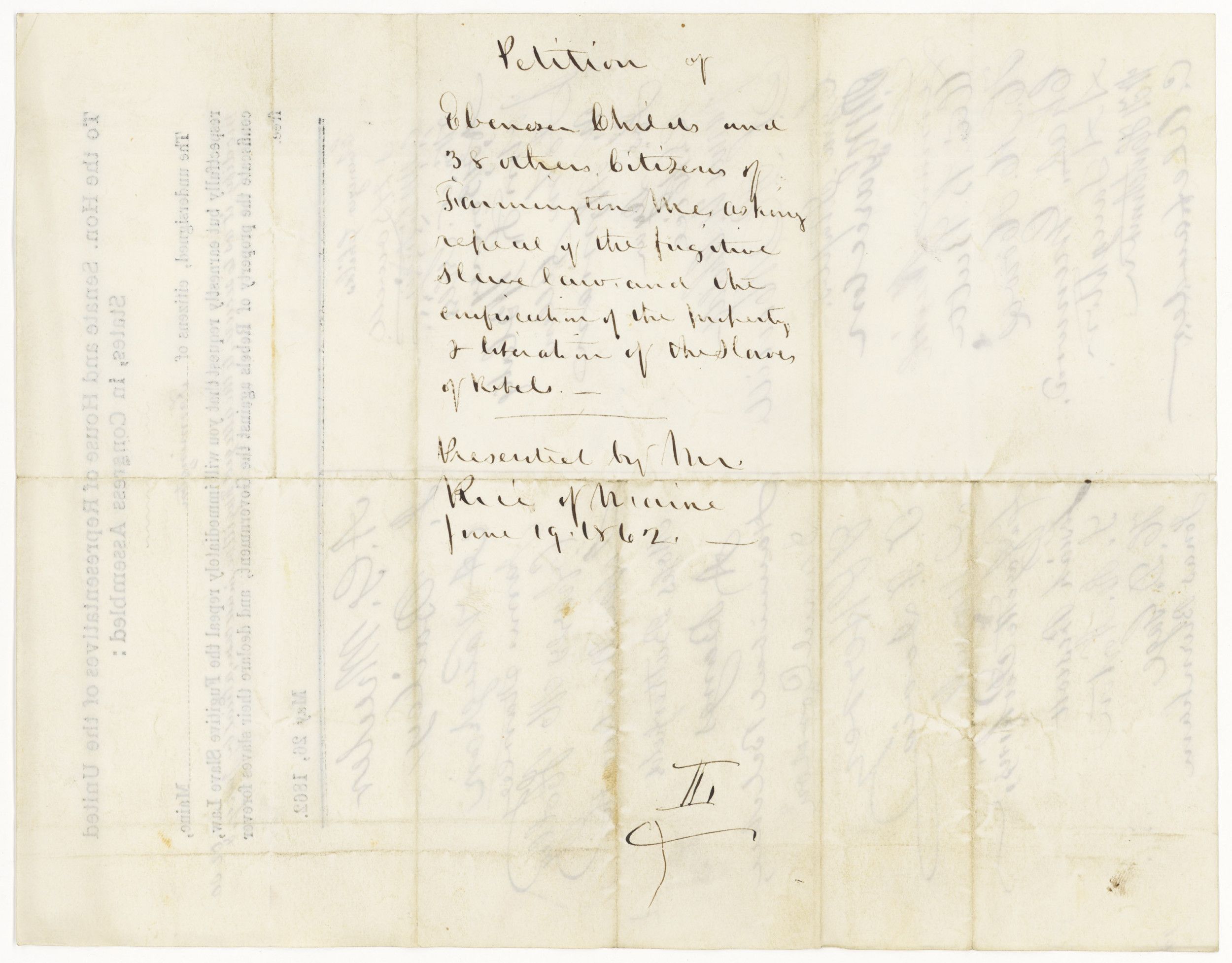
Document
Nineteenth Amendment to the United States Constitution
6/4/1919
This document shows approval by both the House of Representatives and the Senate (by two-thirds vote in each house) of the proposed 19th amendment to the Constitution that "The right of citizens of the United States to vote shall not be denied or abridged by the United States or by any State on account of sex. Congress shall have power to enforce this article by appropriate legislation."
Despite opposition from southern states, both houses of Congress passed the 19th Amendment, proposing full voting rights for women, and sent it to the states for ratification. Three-fourths of the states, or 36 states at that time, had to ratify the amendment before it could be added to the Constitution. On August 18, 1920, after calling a special session of the state legislature, Tennessee became the 36th state to ratify the 19th Amendment, thereby legally enfranchising one-half of the people.
The campaign for woman suffrage was long, difficult, and sometimes dramatic, yet ratification did not ensure full enfranchisement. Many women remained unable to vote long into the 20th century because of discriminatory state voting laws.
The document shown here is the Congressional joint resolution proposing the 19th Amendment. A joint resolution is a formal opinion adopted by both houses of the legislative branch. A constitutional amendment must be passed as a joint resolution before it is sent to the states for ratification.
Despite opposition from southern states, both houses of Congress passed the 19th Amendment, proposing full voting rights for women, and sent it to the states for ratification. Three-fourths of the states, or 36 states at that time, had to ratify the amendment before it could be added to the Constitution. On August 18, 1920, after calling a special session of the state legislature, Tennessee became the 36th state to ratify the 19th Amendment, thereby legally enfranchising one-half of the people.
The campaign for woman suffrage was long, difficult, and sometimes dramatic, yet ratification did not ensure full enfranchisement. Many women remained unable to vote long into the 20th century because of discriminatory state voting laws.
The document shown here is the Congressional joint resolution proposing the 19th Amendment. A joint resolution is a formal opinion adopted by both houses of the legislative branch. A constitutional amendment must be passed as a joint resolution before it is sent to the states for ratification.
Transcript
Sixty-sixth Congress of the United States of America; At the First Session,Begun and held at the City of Washington on Monday, the nineteenth day of May, one thousand nine hundred and nineteen.
JOINT RESOLUTION
Proposing an amendment to the Constitution extending the right of suffrage to women.
Resolved by the Senate and House of Representatives of the United States of America in Congress assembled (two-thirds of each House concurring therein), That the following article is proposed as an amendment to the Constitution, which shall be valid to all intents and purposes as part of the Constitution when ratified by the legislature of three-fourths of the several States.
"ARTICLE ————.
"The right of citizens of the United States to vote shall not be denied or abridged by the United States or by any State on account of sex.
Congress shall have power to enforce this article by appropriate legislation."
[endorsements]
This primary source comes from the General Records of the United States Government.
National Archives Identifier: 596314
Full Citation: Nineteenth Amendment to the United States Constitution; 6/4/1919; Enrolled Acts and Resolutions of Congress, 1789 - 2011; General Records of the United States Government, ; National Archives Building, Washington, DC. [Online Version, https://docsteach.org/documents/document/nineteenth-amendment, May 4, 2024]Nineteenth Amendment to the United States Constitution
Page 1
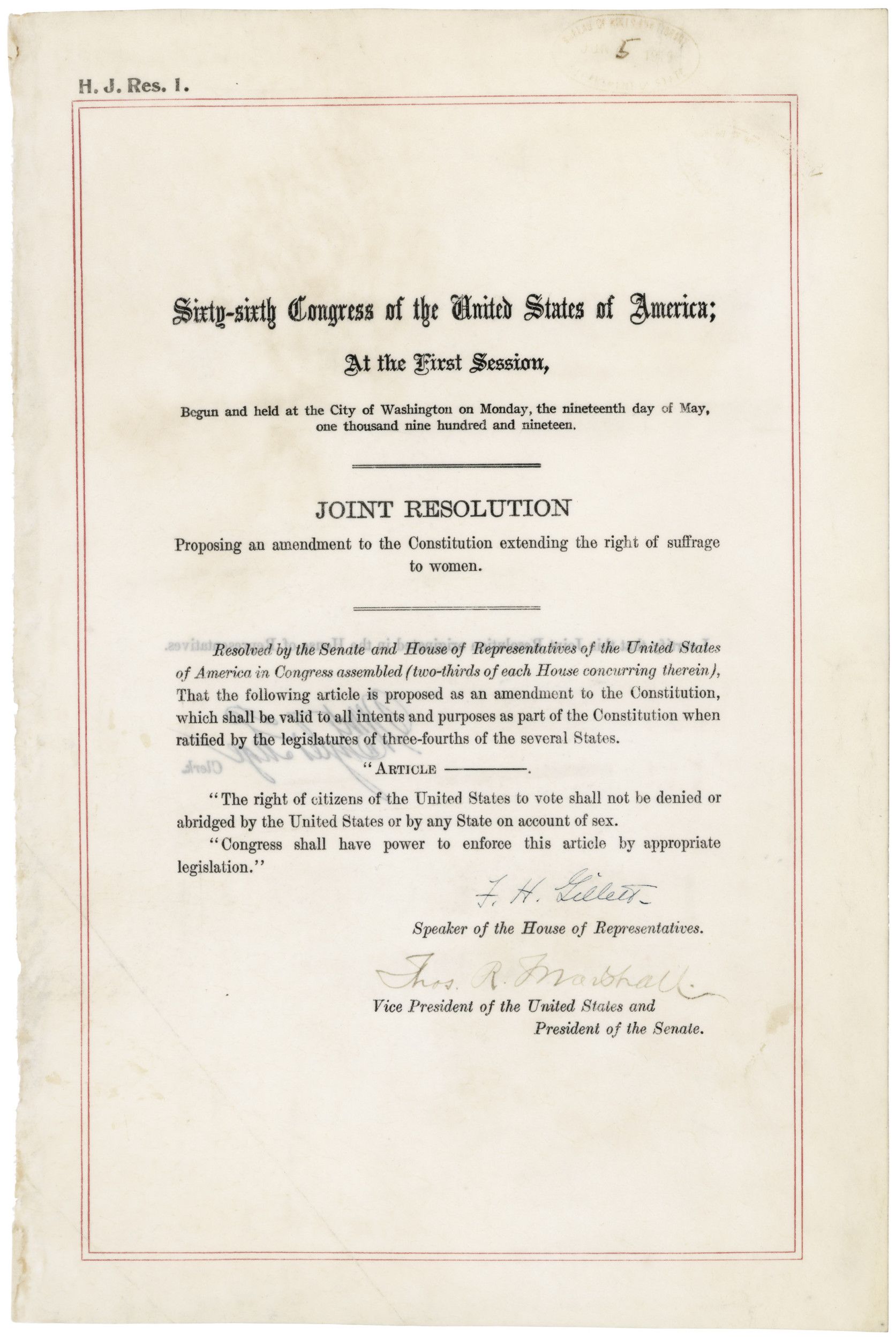
Document
Petition from Susan B. Anthony and Elizabeth Cady Stanton to the United States Senate
ca. 12/1874
In this petition, Elizabeth Cady Stanton and Susan B. Anthony ask the Senate to extend the right to vote to women – "the same protection that colored men now enjoy."
Transcript
To the Senate of the United States.The undersigned respectfully ask that your Honorable Body will extend to women the same protection that colored men now enjoy in the exercise of their right to vote. As the United States Constitution as it is with all its recent Amendments, laws to ensure them, does not in the opinion of Supreme Court Judges guarantee such protection in the several states, we demand of Congress further legislation that shall secure to women their civil & political rights –
Elizabeth Cady Stanton
Susan B. Anthony
43 cong.
1 Sess.
Petition of Elizabeth Lady Stanton and Susan B. Anthony praying the passage of a law guaranteeing to women equal Civil and political rights.
1874 Many 12, Referred to the Committee on Privileges and Elections
Mr. Sargent
To the Senate of the
United States
Petition for the
protection of women
Elizabeth Cady Stanton
Susan B. Anthony
[Written below in a different hand]
25
Sargent
[crossed out]
Prio [Illegible]
This primary source comes from the Records of the U.S. Senate.
National Archives Identifier: 306412
Full Citation: Petition from Susan B. Anthony and Elizabeth Cady Stanton to the United States Senate; ca. 12/1874; Petitions and Memorials Referred to the Committee on Privileges and Elections in the 43rd Congress; Petitions of the Senate Committee on Privileges and Elections, 3/10/1871 - 1946; Records of the U.S. Senate, ; National Archives Building, Washington, DC. [Online Version, https://docsteach.org/documents/document/anthony-stanton-petition, May 4, 2024]Petition from Susan B. Anthony and Elizabeth Cady Stanton to the United States Senate
Page 1
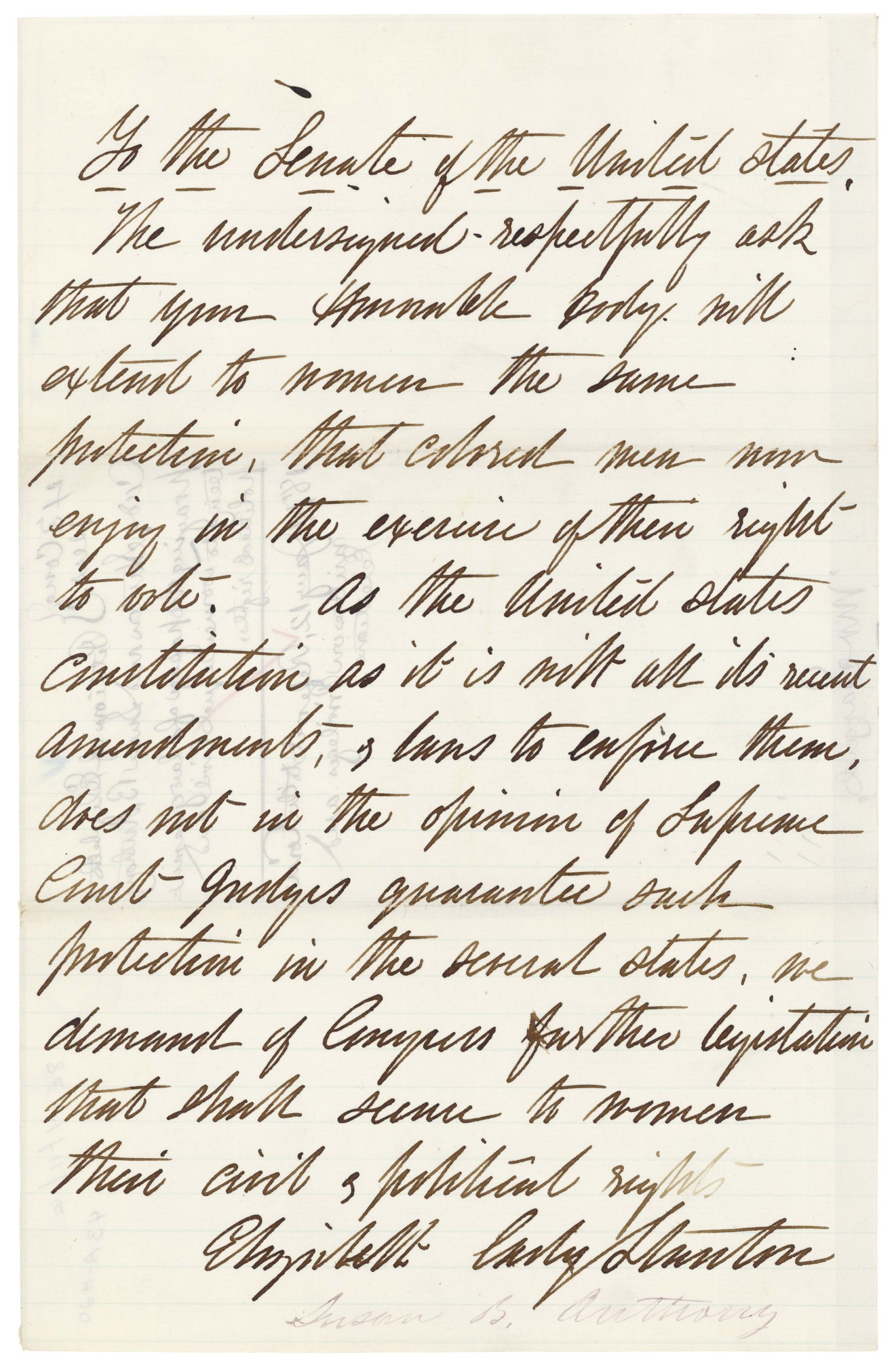
Petition from Susan B. Anthony and Elizabeth Cady Stanton to the United States Senate
Page 2

Petition from Susan B. Anthony and Elizabeth Cady Stanton to the United States Senate
Page 3

Document
Frederick Douglass
ca. 1879
Additional details from our exhibits and publications
Born into slavery in Maryland, Frederick Douglass became an advocate for the equality of rights for all people. If there is no struggle, there is no progress.––Frederick Douglass, August 3, 1857
This primary source comes from the Frank W. Legg Photographic Collection of Portraits of Nineteenth-Century Notables.
National Archives Identifier: 558770
Full Citation: Frederick Douglass; ca. 1879; Frank W. Legg Photographic Collection of Portraits of Nineteenth-Century Notables, . [Online Version, https://docsteach.org/documents/document/frederick-douglass, May 4, 2024]Frederick Douglass
Page 1

Document
Garrison, William Lloyd; three-quarter-length, seated
ca. 1860 - 1865
This primary source comes from the Records of the Office of the Chief Signal Officer.
National Archives Identifier: 530489
Full Citation: Garrison, William Lloyd; three-quarter-length, seated; ca. 1860 - 1865; Records of the Office of the Chief Signal Officer, . [Online Version, https://docsteach.org/documents/document/garrison-william-lloyd-threequarterlength-seated, May 4, 2024]Garrison, William Lloyd; three-quarter-length, seated
Page 1
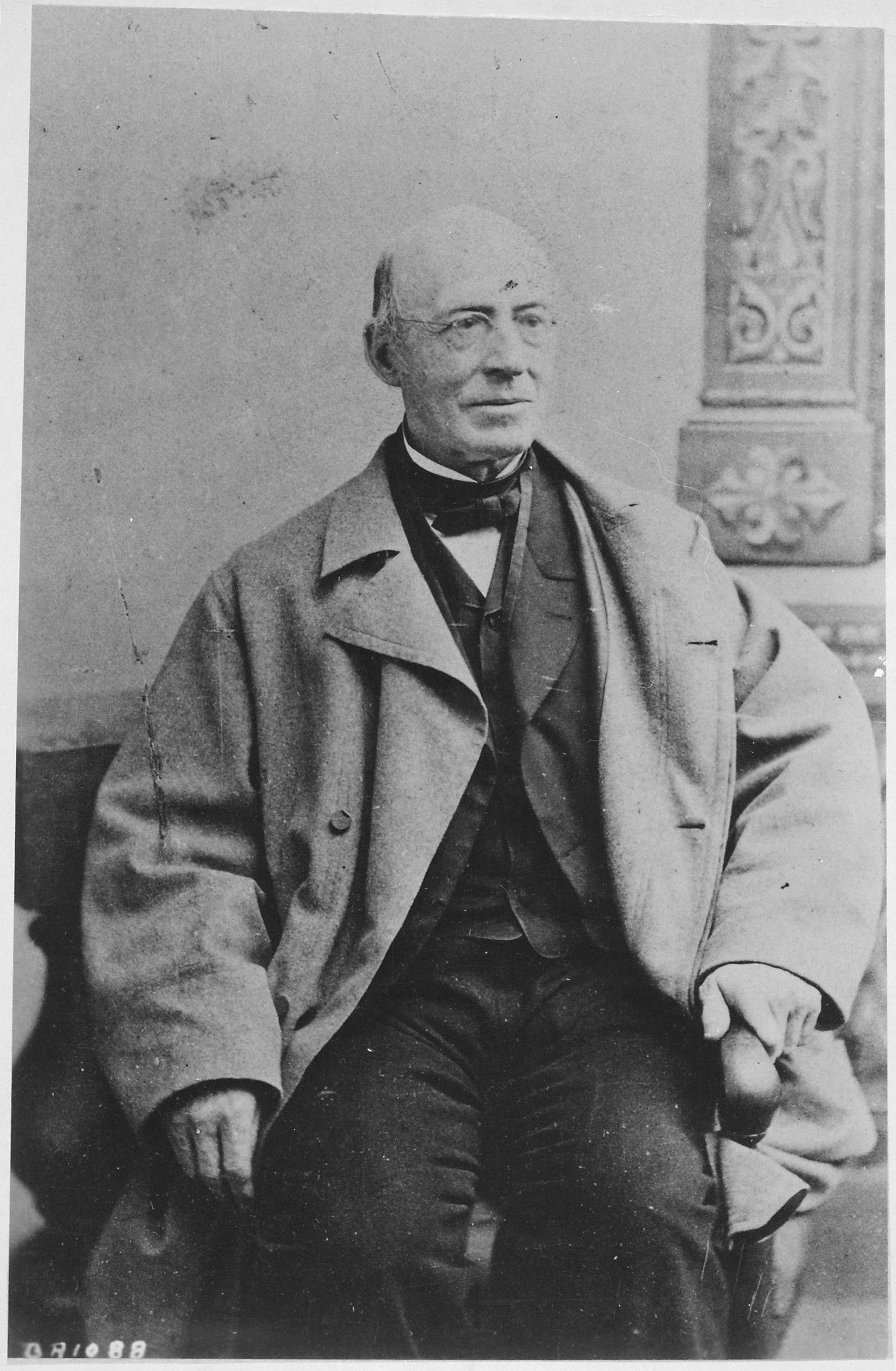
Document
Judgment in the U.S. Supreme Court Case Dred Scott v. John F. A. Sandford
3/6/1857
In this ruling, the U.S. Supreme Court stated that enslaved people were not citizens of the United States and, therefore, could not expect any protection from the federal government or the courts. The opinion also stated that Congress had no authority to ban slavery from a federal territory.
In 1846, an enslaved Black man named Dred Scott and his wife, Harriet, had sued for their freedom in St. Louis Circuit Court. They claimed that they were free due to their residence in a free territory where slavery was prohibited.
The odds were in their favor. They had lived with their enslaver, an army surgeon, at Fort Snelling, then in the free Territory of Wisconsin. The Scotts' freedom could be established on the grounds that they had been held in bondage for extended periods in a free territory and were then returned to a slave state. Courts had ruled this way in the past.
However, what appeared to be a straightforward lawsuit between two private parties became an 11-year legal struggle that culminated in one of the most notorious decisions ever issued by the Supreme Court. Scott lost his case, which worked its way through the Missouri state courts; he then filed a new federal suit which ultimately reached the Supreme Court.
On its way to the Supreme Court, the Dred Scott case grew in scope and significance as slavery became the single most explosive issue in American politics. By the time the case reached the high Court, it had come to have enormous political implications for the entire nation. Slavery had become the single most explosive issue in American politics.
On March 6, 1857, Chief Justice Roger B. Taney read the majority opinion, which stated that enslaved people were not citizens of the United States and, therefore, could not expect any protection from the federal government or the courts. The opinion also stated that Congress had no authority to ban slavery from a federal territory. This decision moved the nation a step closer to the Civil War.
The decision in Scott v. Sandford, considered by many legal scholars to be the worst ever rendered by the Supreme Court, was overturned by the 13th and 14th amendments to the Constitution, which abolished slavery and declared all persons born in the United States to be citizens of the United States.
In 1846, an enslaved Black man named Dred Scott and his wife, Harriet, had sued for their freedom in St. Louis Circuit Court. They claimed that they were free due to their residence in a free territory where slavery was prohibited.
The odds were in their favor. They had lived with their enslaver, an army surgeon, at Fort Snelling, then in the free Territory of Wisconsin. The Scotts' freedom could be established on the grounds that they had been held in bondage for extended periods in a free territory and were then returned to a slave state. Courts had ruled this way in the past.
However, what appeared to be a straightforward lawsuit between two private parties became an 11-year legal struggle that culminated in one of the most notorious decisions ever issued by the Supreme Court. Scott lost his case, which worked its way through the Missouri state courts; he then filed a new federal suit which ultimately reached the Supreme Court.
On its way to the Supreme Court, the Dred Scott case grew in scope and significance as slavery became the single most explosive issue in American politics. By the time the case reached the high Court, it had come to have enormous political implications for the entire nation. Slavery had become the single most explosive issue in American politics.
On March 6, 1857, Chief Justice Roger B. Taney read the majority opinion, which stated that enslaved people were not citizens of the United States and, therefore, could not expect any protection from the federal government or the courts. The opinion also stated that Congress had no authority to ban slavery from a federal territory. This decision moved the nation a step closer to the Civil War.
The decision in Scott v. Sandford, considered by many legal scholars to be the worst ever rendered by the Supreme Court, was overturned by the 13th and 14th amendments to the Constitution, which abolished slavery and declared all persons born in the United States to be citizens of the United States.
Transcript
Missouri - C. C. U. S.No. 7.
Dred Scott, Plff in Er
vs.
John F. A. Sandford
Filed 30th December 1854.
Dismissed for want of jurisdiction.
March 6th 1857
No. 7.
Dred Scott - Plff in Er
vs
John F. A. Sandford
In error to the Circuit Court of the United States for the District of Missouri.
This cause came on to be heard on the transcript of the record from the Circuit Court of the United States for the District of Missouri and was argued by counsel - on consideration whereof, it is now here ordered and adjudged by this court that the judgment of the said Circuit Court in this cause be and the same is hereby reversed for the want of jurisdiction in that court, and that this cause be and the same is hereby remanded to the said Circuit Court with directions to dismiss the case for the want of jurisdiction in that court.
Js. W. Ch. Mr. Taney
6th March 1857
This primary source comes from the Records of the Supreme Court of the United States.
National Archives Identifier: 301673
Full Citation: Judgment in the U.S. Supreme Court Case Dred Scott v. John F. A. Sandford; 3/6/1857; Dred Scott, Plaintiff in Error, v. John F. A. Sandford; Appellate Jurisdiction Case Files, 1792 - 2010; Records of the Supreme Court of the United States, ; National Archives Building, Washington, DC. [Online Version, https://docsteach.org/documents/document/dred-scott-judgment, May 4, 2024]Judgment in the U.S. Supreme Court Case Dred Scott v. John F. A. Sandford
Page 1
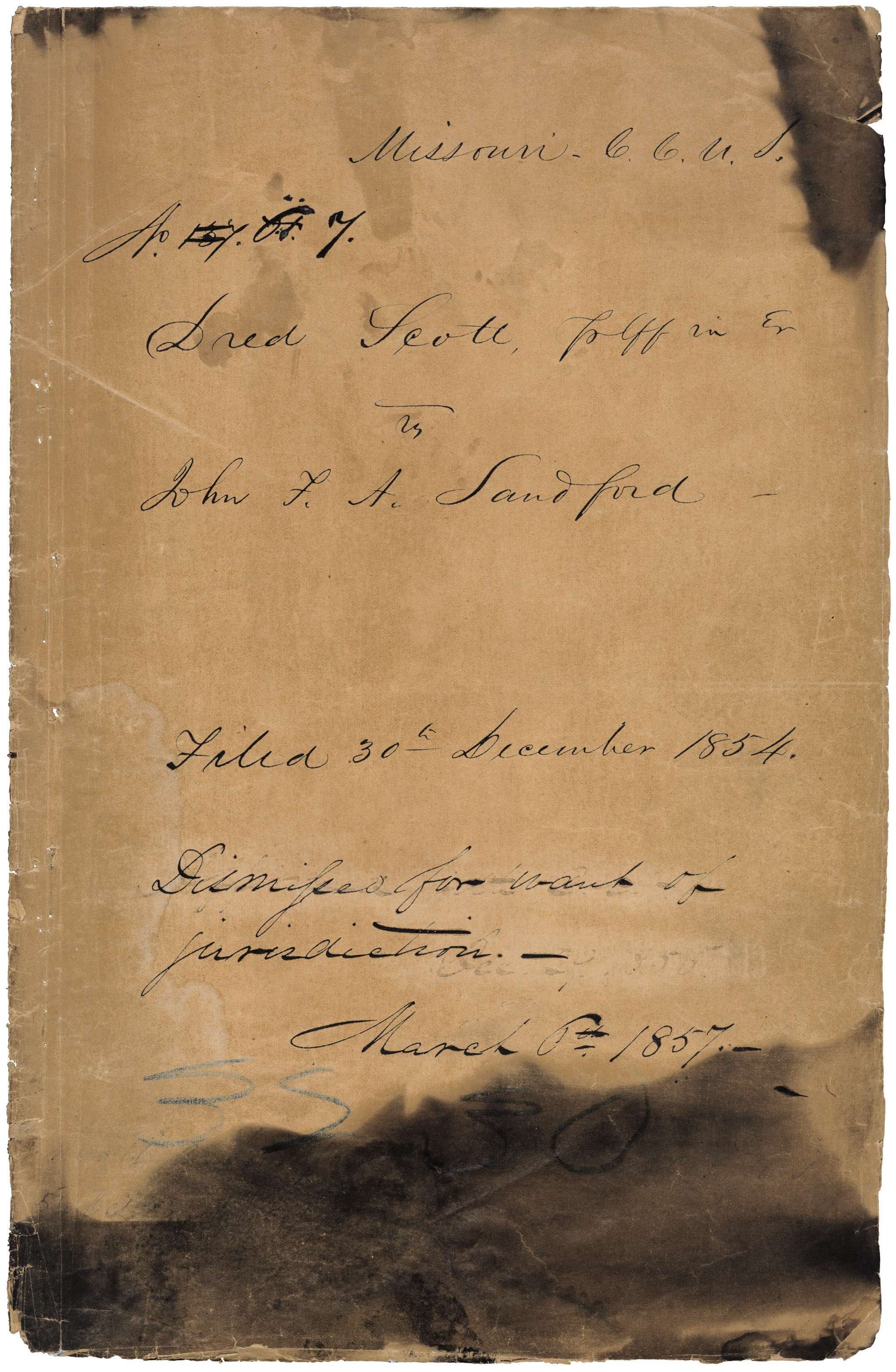
Judgment in the U.S. Supreme Court Case Dred Scott v. John F. A. Sandford
Page 2

Document
Photograph of President Abraham Lincoln
ca. 1860-1865
Shortly after being elected the 16th President of the United States, Abraham Lincoln faced a divided nation. The Civil War lasted almost his entire Presidency. Just weeks into his second term as President, Lincoln was assassinated while watching a play at Ford’s Theater in Washington, D.C.
This primary source comes from the Records of the Office of the Chief Signal Officer.
National Archives Identifier: 530413
Full Citation: Photograph of President Abraham Lincoln; ca. 1860-1865 ; Mathew Brady Photographs of Civil War-Era Personalities and Scenes, 1921 - 1940; Records of the Office of the Chief Signal Officer, . [Online Version, https://docsteach.org/documents/document/photograph-of-president-abraham-lincoln, May 4, 2024]Photograph of President Abraham Lincoln
Page 1

